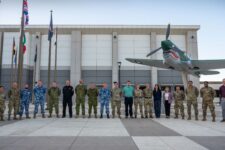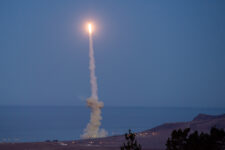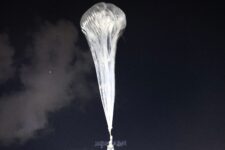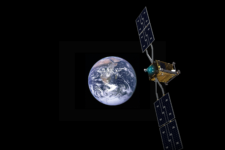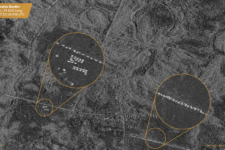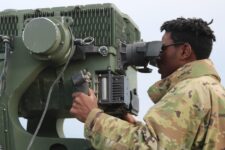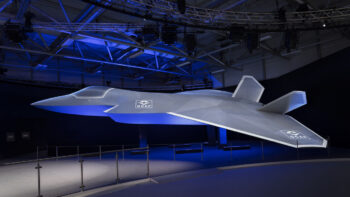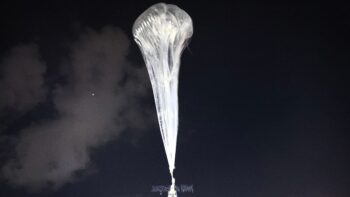
Brig. Gen. Jason Cothern, Space Force Space Systems Command deputy commander.
MILSAT SYMPOSIUM 2023 — The Space Force’s primary acquisition command, Space Systems Command (SSC), will wrap up plans for two new “Systems Deltas” to support electronic warfare and positioning, navigation and timing operations by mid-next month, according to a senior SSC official.
Brig. Gen. Jason Cothern, SSC deputy commander, told Breaking Defense on Oct. 19 that Space Force chief Gen. Chance Saltzman had given the command “30 days” to ready the new deltas — which are being created to support the two new prototype “Integrated Mission Deltas (IMDs)” the service stood up under Space Operations Command on Oct. 12 as part of its effort to improve operational readiness and unity of command. Space Operations Command generates forces for, and serves as the Space Force component to, US Space Command.
During his earlier presentation at the MilSat Symposium in Mountain View, Calif., Cothern explained that while organizational planning has just begun for the new Systems Deltas, or SYDs, they are expected to mimic the current structure of SSC’s “Acquisition Deltas” for different types of missions. (Deltas are the Space Force equivalent to the Air Force numbered air forces.)
“… [Y]ou’re gonna see a lot of familiarity between those Acquisition Deltas and what will be the System Deltas as we move forward. And that’s about a level of detail that I’m able to share right now. But there’s a lot of work that’s been going on behind the scenes on on getting us prepared for that,” he said.

Space Systems Command organizational chart. (Handout)
SSC’s current organizational charts from July [PDF] show that the various Acquisition Deltas report up to the command’s five main functional directorates: Space Sensing; Military Communications and Positioning, Navigation and Timing (MilCom & PNT); Space Domain Awareness and Combat Power; Battle Management, Command, Control and Communications (BMC3); and Assured Access to Space, i.e. launch. To complicate matters, the heads of each of those directorates also serve as “program executive officers” holding legal acquisition authority, and report directly to the Department of the Air Force’s Space Acquisition Executive and Assistant Secretary for Space Acquisition and Integration Frank Calvelli.
For example, at the moment there are three PNT-related Acquisition Deltas — GPS, GPS User Equipment and GPS Ground CS — underneath the MilCom & PNT directorate.

Space Systems Command Milcomm & PNT organizational chart. (Handout)
Electronic warfare, the other mission focus of the IMD/SYD scheme, isn’t specifically listed anywhere in SSC’s organizational charts. However, an SSC spokesperson told Breaking Defense today that it comes under the Warfighter Enterprise Acquisition Delta, that in turns falls under the Space Domain and Combat Power directorate.
Saltzman announced the plan to create the new SSC Systems Deltas in an Oct. 13 Commanders Note (or C-Note), obtained by Breaking Defense. The note explains that the new structures “will strengthen unity of effort for capability development … [and] directly complement IMDs by developing, acquiring, and fielding capability that satisfies operational needs.”
The IMD concept, meanwhile, “merges mission generation, intelligence, and cyber defense with level-1 and level-2 maintenance (e.g., preventive maintenance, anomaly resolution, and deficiency resolution), system enhancement, and application-layer development under a single O-6 command team,” the C-Note added.
In the past, maintenance and sustainment efforts were led separately by SSC from operational activities led by Space Operations Command.
Saltzman has made clear that both the concepts for IMDs and the SYDs, which will provide acquisition support, are not set in stone, but have been deliberately limited in scope to serve as learning experiences that potentially could be adapted for “broader implementation.”
That said, his power to compel how Space Force acquisition is accomplished is limited.
The Space Force, like all other military services, does not hold legal buying power. The authority to say yes or no to billions of dollars in spending actually lies with Calvelli, because the Department of the Air Force is the civilian organization that oversees the Space Force. SSC in essence does the day-to-day work, serving as the source of expertise to ensure operational needs are reflected in acquisition program structures, writing programmatic requirements and judging vendor performance towards programmatic requirements.
This means only Calvelli has the power to organize the program executive offices, even the five that are led by officials dual-hatted as SSC directorate leaders. And at least one affiliated source says that at the moment Calvelli is pretty happy with how his domain is structured.


